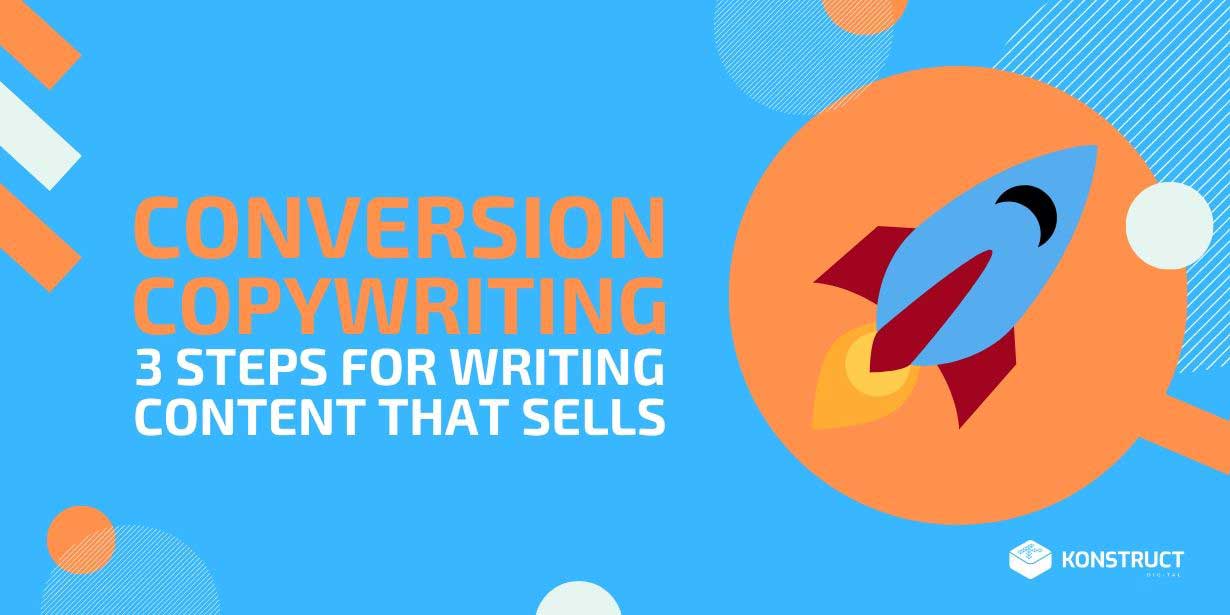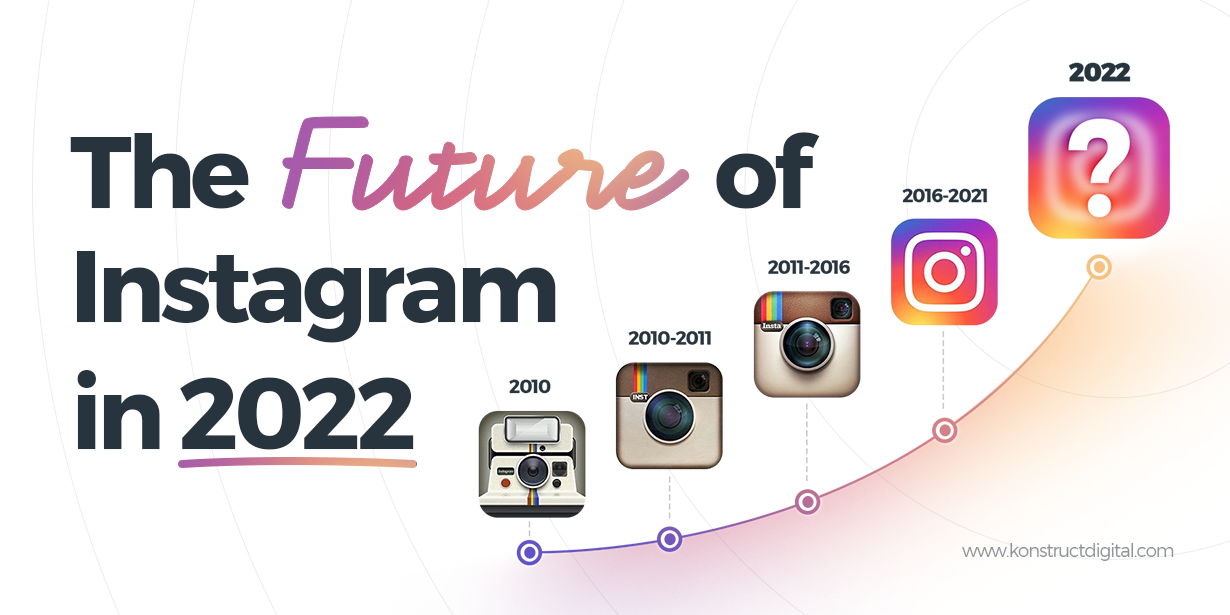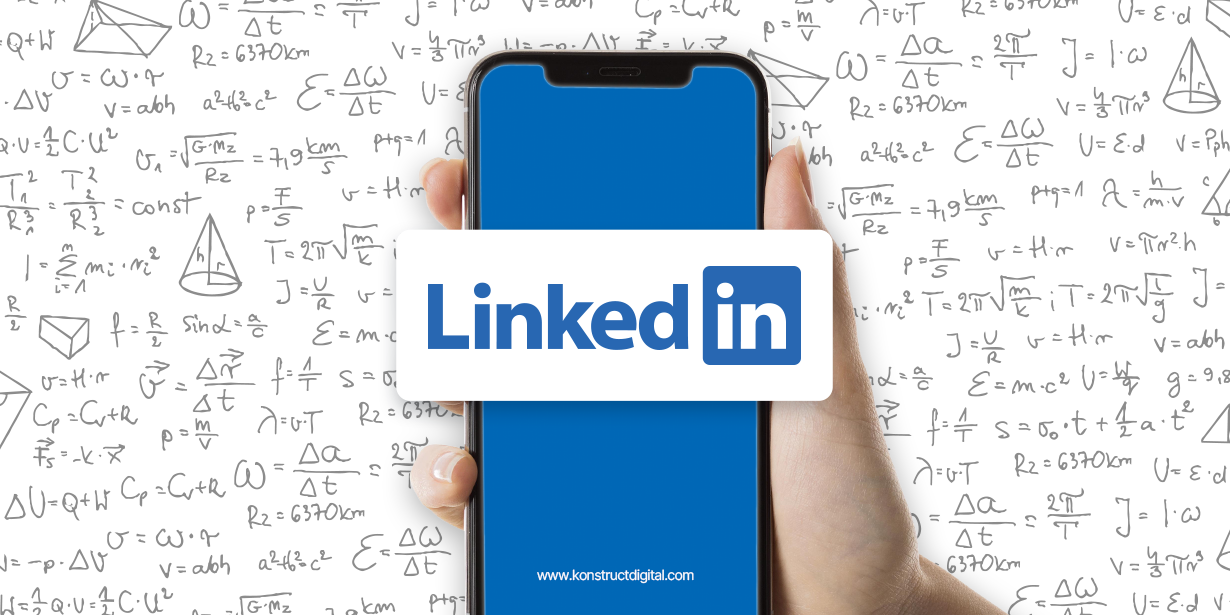B2B content marketing is a great way to build trust and credibility with your target audience. But it can be tough to stand out in the sea of endless content out there.
Not only is B2B a competitive space, but there’s so much sensory overload out there today that your marketing efforts can easily be ignored and forgotten unless you do something outstanding.
Although there are plenty of B2B marketing strategies floating around the digital abyss, creating one that’s innovative and stands out from the crowd is the key to your marketing success.
The difference between mediocre and superior results often involves using proven marketing strategies (or combining them) in unique ways. That’s why we’ve arranged a list of 9 of the best B2B content marketing examples we could find, from big names like Asana and HubSpot to well-known companies like Canva and GE.
So, if you’re looking for some engagement drivers for your own B2B content marketing campaigns, look no further. The 9 B2B content marketing examples below will give you all the motivation you need to create content your audience will love and be hungry to engage with.
HubSpot’s Inbound Marketing Strategy
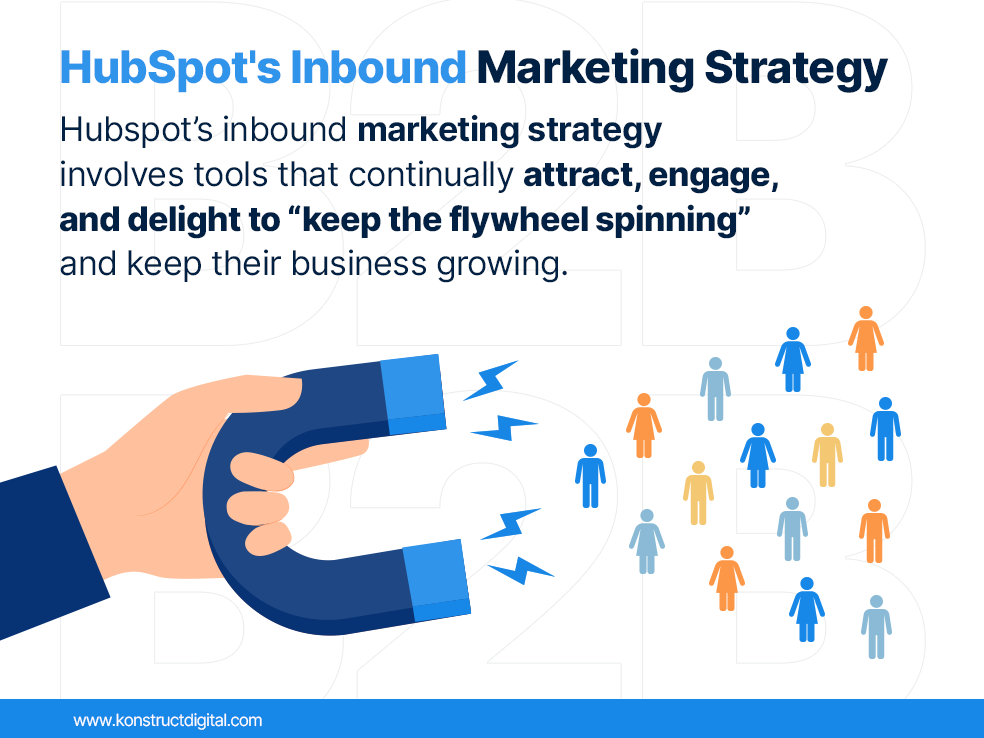
In the marketing world, you’ve probably heard the term “inbound marketing” in passing or maybe you even use inbound marketing as part of your own marketing strategies. Well, did you know HubSpot’s founder actually coined the term “inbound marketing” to describe the marketing strategy they use to continuously engage their customers while attracting new prospects?
While many companies implement their marketing strategy once and then wait for the campaign to bring in business, Hubspot’s inbound marketing strategy involves tools that continually attract, engage, and delight prospects to “keep the flywheel spinning” and keep their business growing.
Inbound marketing has been a real game-changer in the content marketing world because it builds continuous engagement, and attracts audiences to return for repeat business, and refer others.
But how do they execute inbound marketing so well, you ask?
Well, if you’ve ever looked into online marketing certification courses or even googled a query related to marketing, you probably know the answer!
HubSpot has a massive inventory of blog content that ranks for some of the most lucrative search terms in the marketing space. Additionally, they also have a huge podcast network, tons of videos across multiple YouTube channels, plenty of helpful ebooks, free templates, and much more!
But in our opinion, they’re shining star is really their free courses and certifications. Not only do these courses provide tons of great information for aspiring marketers, sales, or customer service representatives, but they also hook prospects and keep them hooked for a significant period of time. And that’s where the magic happens!
What better platform to use for email marketing for example, than the tool that taught you everything you needed to know about email marketing?
HubSpot has effectively positioned its brand as the undeniable expert in all things marketing sales, and customer service, and it’s a great example to reference when you’re trying to position your own brand as an expert in your respective industry.
General Electric’s Fictional Sci-Fi Podcast
When it comes to creative B2B content marketing, General Electric (GE) is no stranger to innovation, producing some fantastic content marketing campaigns over the years. However, when they realized that they needed to increase their brand awareness with younger audiences, they jumped on to the increasing popularity of podcasts to create a fun sci-fi podcast series that is really one for the books!
In this eight-episode podcast called “The Message,” a fictional team of cryptologists discovers a 70-year-old message from space. The cryptologists then use real GE ultrasound technology to decode the mysterious alien transmissions.
GE also created an alternate reality game to promote the podcast and further engage its listeners.
Back in the 1950s, GE did something similar with their “GE Theater” television series. However, deciding to turn their old marketing idea into a podcast gave them a leg-up with younger users who are always looking for the next best podcast to listen to as they go about their daily business or on their commutes. Plus, the podcast was available to download for free without needing to pay to subscribe to a specific service.
The 2015 series was extremely popular, garnering 5 million downloads as people tuned in each week to follow the entertaining story.
Not only did GE showcase its technology in a subtle way, but the audience also got to enjoy a fun story and kept coming back for more.
This is a prime example of how a brand understood its target audience and executed a campaign tailored to that audience’s behaviours.
GE’s podcast was so innovative that the Interactive Advertising Bureau started hosting “podcast upfronts” to urge other companies to use podcasts as a form of advertisement.
Many companies run ads on podcasts because their products aren’t seemingly something that they could build a podcast around. However, GE was able to think of a creative way to showcase its products in its own science-fiction podcast. Companies have been paying for TV and movie product placements for years, but having your own podcast provides a “native advertising” avenue to allow easier B2B product promotion.
Asana’s User-Generated B2B Content
The Asana project management platform launched its “We Love Humans” campaign in 2019 to celebrate its consumers’ accomplishments as a result of using Asana. The campaign is an inspiring example of how to produce user-generated content to inspire others to think about what’s possible with your product or service.
The idea for the campaign came after Chris Butler-Stroud, CEO of Whale and Dolphin Conservation, told Asana, “I can genuinely say that there are more dolphins and whales alive today thanks to Asana.” This testimonial inspired Asana’s leadership to create one of the best B2B content marketing campaigns focusing on their consumers’ triumphs with Asana.
The campaign featured photos of over 80 consumers from different industries around the globe who credit Asana for their success.
They used these photos and text or video testimonials on their landing pages, social media, and email marketing campaigns. Each testimonial focused on how the business used Asana to overcome a business challenge. The challenges ranged from collaborating on large projects to managing remote teams.
Asana learned that the best way to connect to new customers is to show them how the brand solves business challenges, improves employee lives, and celebrates successes.
By featuring their consumers who use Asana in different ways in the “We Love Humans” campaign, Asana produced content that inspired their target audience and showed them what exceptional achievements are possible with Asana’s highly personalizable project management tools.
The campaign was such a success that Asana increased its content marketing budget. They continue to feature their users’ triumphs in their marketing and focus on the diversity of their users to keep content relevant to diverse groups worldwide.
Canva’s Design Challenge Campaign
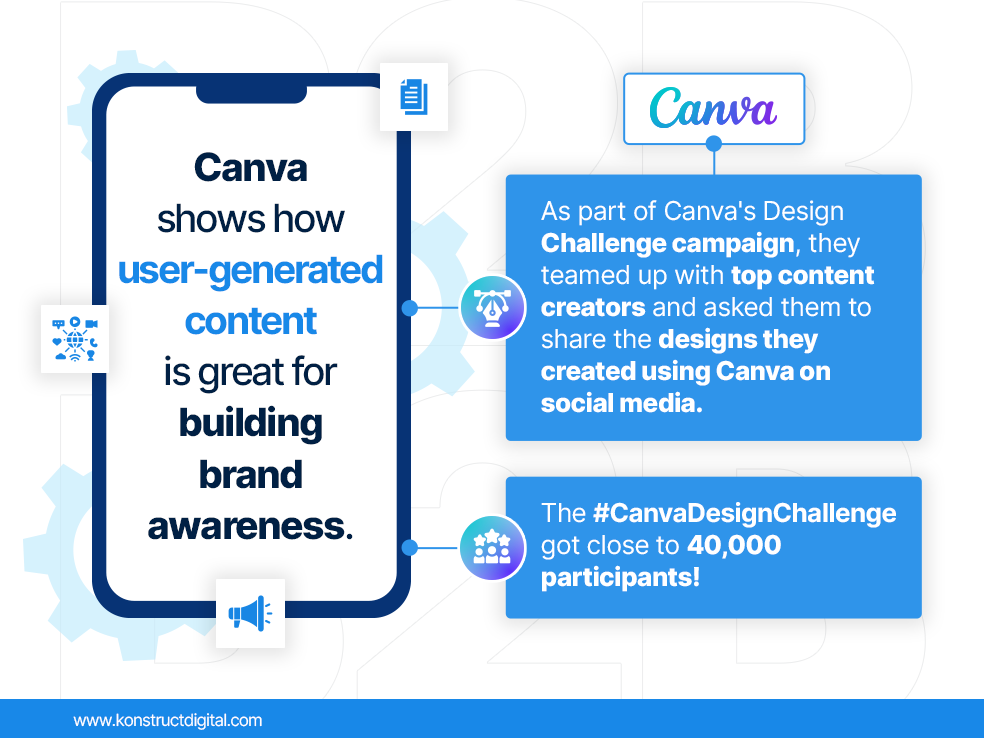
Canva allows users to create professional-looking designs without the need for any prior design experience. They’re also an example of how a company can collaborate with designers to create effective word-of-mouth marketing.
One of Canva’s most successful content marketing campaigns was its Design Challenge campaign. For this campaign, Canva teamed up with top content creators and asked them to share the designs they created using Canva.
Each week, the Canva staff chose their top five designs and featured them on their social media channels. The winners also received a designated prize. When designers who had entered the contest posted their entries on social media, other graphic designers were encouraged to enter the contest as well. And these entrants went on to also share their creations on social media.
The main reason Canva’s design challenge campaign was so successful is that Canva was able to increase its reach with user-generated content. All they had to do was create the contest and watch the contest entrants multiply. And since Canva is easy to use, the contest created brand awareness that brought many new users to the platform.
Further, the winners’ designs were posted on Canva’s social media accounts, increasing their followers even more as people continued to like and share the user-generated content.
Canva got close to 40,000 participants under the #CanvaDesignChallenge hashtag and their social media following increased.
When contest entrants saw how easy it was to use Canva to create professional-looking graphics with ease, many of them stuck around and continued using it on a regular basis. After all, there were tens of thousands of new graphics to use on the site.
This campaign not only helped increase Canva’s brand awareness but also gave them a ton of user-generated content that they could use on their site and across all of their marketing channels.
Plenty of companies utilize user-generated content to grow their site and host contests on social media. However, Canva shows how you can combine the two strategies effectively to both grow your site content and bring in new users from contest entries and subsequent social media shares.
MailChimp’s Customer-Focused Instagram Campaign
Mailchimp is a well-known email platform that provides email marketing solutions for businesses of all sizes and budgets, including solutions for companies that don’t have a budget at all. So, they decided to utilize a reality-video-style advertising campaign to focus on their potential customers.
MailChimp’s reality-television-style videos are from the creators of Queer Eye. This series, called “Werrrk!” showcases the success stories of customers who needed a business makeover. Since MailChimp has options even for companies without an advertising budget, it made sense to try to appeal to companies struggling to become the company they originally envisioned.
Since each video is under ten minutes, it’s easy to consume. Each video focuses on a struggling small business that has obstacles it needs to overcome to be successful. And each video includes a business makeover of some sort, focusing on improving business practices and using Mailchimp to help their business grow.
Using a popular reality-tv-style format with high-profile creators ensures that more people will watch the videos for entertainment and pass them on to friends through social media. After all, the videos are well-made and only mention Mailchimp peripherally without sounding like an ad for the product. However, anyone who watches a video will have their interest piqued by how Mailchimp might work for them.
This reality series started pre-pandemic and continues today. The video designs show the human side of the business and demonstrate that Mailchimp is a customer-focused brand that’s accessible to everyone. Thus, it’s an innovative way for Mailchimp to engage with people who may consider Mailchimp as a good solution for their business needs as well.
While reality videos and advertising videos have been around for a long time, combining advertising with reality TV is pretty unheard of for B2B content marketing. Mailchimp’s Werrrk! videos use a popular reality video style to appeal more widely to potential businesses of any size and budget. And, the videos are more likely to be shared with friends than most videos because of the popularity of the Queer-Eye-style video format featuring real people.
Secureworks’ Buyer Personas

Secureworks is a cybersecurity company that offers cloud security operations and an analytics platform that helps customers detect potential cyber threats before they happen and rapidly respond if/when they do.
The cybersecurity market is a competitive one, and it’s not easy to stand out from the competition.
So how has Secureworks managed this? They’ve built a successful content marketing strategy that really speaks to their audience’s pain points when it comes to cybersecurity and compliance.
The cornerstone of this success has been the creation of clear buyer personas for each of their target customers. Buyer personas have allowed them to really understand their audience and, in turn, create content that directly speaks to each buyer and their challenges at each stage of the purchase journey.
They asked their company’s sales leadership some important questions to help understand their buyers better. Primarily, they wanted to find out who the people were that the salespeople were talking to on a regular basis and what types of objections the salespeople were continuing to hear.
From this research, the company created six personas to represent their average customer, what they needed, and their pain points. Then, they created content to speak directly to these six typical customers and address their main questions and concerns.
Secureworks uses a journey map to see how each business interacts with it so that it can continuously refine its six personas to reflect the true nature of its audience. These personas allow the company to provide more personalized content for the types of people who are interested in its security services.
Having a regularly refined list of personas has helped Secureworks become more focused on its true buyers in all of their content. Their content is segmented into two streams: a blog that addresses common questions the audience has about cybersecurity and resources, including webinars, white papers, case studies, and videos that speak more to these challenges and how Secureworks solves them.
Determining who your B2B customers are and speaking to their pain points may seem like such a simple approach. However, Secureworks proved how effective regularly defined buyer personas can be by doubling its conversion rate.
Salesforce’s Innovative Video Campaign
Salesforce provides customer relationship management software for businesses of all sizes. They use customer feedback to improve their products and create innovative new features. And through the customer feedback, they learned it wasn’t always clear to current and potential users what Salesforce is all about.
Thus, Salesforce launched its “We Bring Companies and Customers Together” campaign to attempt to explain what its company does and what it can do for other companies. Many companies are so close to their products that they think everyone understands what their products do. However, it’s a wise company that assumes that potential users may not know what possibilities are available.
Salesforce’s content marketing efforts included radio, print, television, digital, SlideShare presentations, and metro ads with their core message of “we bring companies and customers together.” Each ad – even the ones with real people – featured their digital animated company mascots.
A typical video ad would show side-by-side videos of a business and its potential customers going about their days with the animated characters helping to unite the two to meet their separate needs together.
The results were favourable, with an overall increase in current and new engagement with their brand. That included organic traffic to their site, newsletter signups, and ebook downloads.
By doing market research and discovering what their potential users (and some current users) didn’t understand about Salesforce, they were able to create B2B ads that were more relevant. Thus, they demonstrated how important it is to use what companies don’t know about your company to craft an effective ad campaign.
Although this example is a paid campaign, the idea of looking into customer feedback to guide content production is still relevant for organic campaigns as well!
Trello’s Educational Blog
Trello is a project management tool used by over 4 million people. Its simple yet effective design has made it a favourite among small businesses and large enterprises alike. Their educational blog is stuffed with information that could send their readers on a never-ending educational journey.
Trello users or potential users can find blog articles about Trello products, case studies, productivity information, remote work usage, and enterprise usage.
While you might find that a few links in the articles relate back to high-authority sources like specific studies, the majority of the articles are chock-full of relevant links to other Trello sources. So, readers are likely to save several Trello blog articles to read after they read any Trello article.
What makes the teamwork king stand out is the sheer amount of available blog content. Over 700 articles on the Trello blog cover everything from project management tips to how to increase productivity.
By linking back to several of their 700+ articles in each article, they ensure that current users have more information about how to optimize Trello for their purposes. Meanwhile, users who are test-driving it or haven’t tried it before are more likely to stick around after they realize that it has more complex functionality than they originally assumed from its deceptively-basic layout.
The strategy of linking back to themselves in such overwhelming proportions also helps Trello ensure that it’s turned itself into an authoritative source, which is also an excellent search engine optimization strategy.
Trello’s B2B content marketing model relies on providing as much information about how to use their product as possible and linking back to themselves over and over in their blog content. So, it keeps current users engaged, brings new users to the site, keeps users on the site longer, increases SEO rankings, and increases conversion rates.
Zapier’s Semi-Relevant Listicles
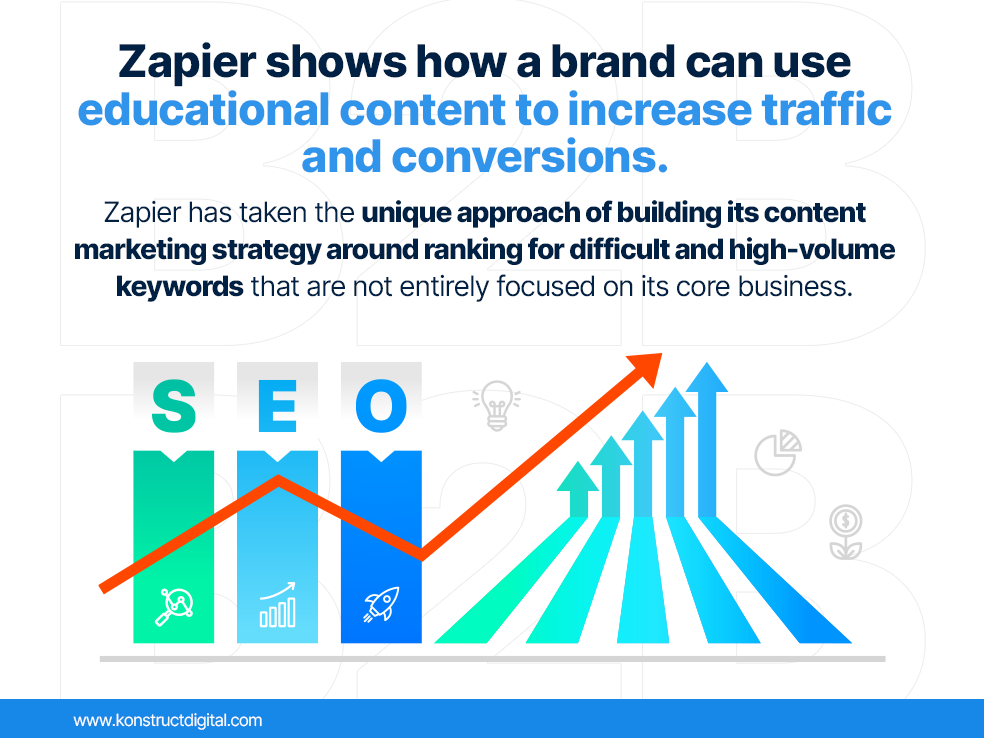
Zapier is an online automation and integration tool that connects 5000+ apps to help with workflow. However, rather than trying to only pull people into their site who are searching for such a service, the company decided to take the unique approach of building its content marketing strategy around ranking for difficult and high-volume keywords that are not entirely focused on its core business.
When Zapier found that not too many people were even searching for keywords related to their type of software, they decided they needed to get people to their site using other keywords.
Thus, the foundation of Zapier’s content marketing strategy has been the creation of hundreds of optimized listicles on topics that are not directly related to what the company actually develops. However, these are topics that are extremely useful to their target audience and are most likely to pull potential users into their site.
Their listicles have been extremely popular, driving 455,000 sessions to their blog each month and helping the company rank for more than 287,000 keywords.
Their top five listicles are lists of the best URL shorteners, window email clients, to-do list apps, project management software, and PowerPoint alternatives. These five bring in 183,000 sessions alone. Meanwhile, their brand name gets only 85,000 searches per month.
Zapier’s content is a great example of a brand using educational content that helps solve its audience’s challenges to increase traffic and conversions. Well-written listicles are well organized and easy to read and scan, they’re engaging and easy to remember, and great to add to your evergreen content arsenal. Plus, targeting high-volume semi-relevant keywords can help bring in more traffic than you’ll likely get otherwise.
Build a Scroll-Stopping B2B Content Marketing Strategy with the Help of B2B Content Marketing Experts
If you’re having trouble breaking the status quo, that doesn’t mean you should give up on content marketing. Your brand is unique, which means it will need a unique strategy to help you achieve your goals.
Let Konstruct Digital help you take your content marketing strategy to the next level. We are a team of digital marketing experts specializing in SEO, social media, and content marketing with an eye to what works.
With the help of our experts, you can create a scroll-stopping content marketing strategy that will help you achieve your business goals.
Contact us today to learn more about our services and how we can help you grow your business.






